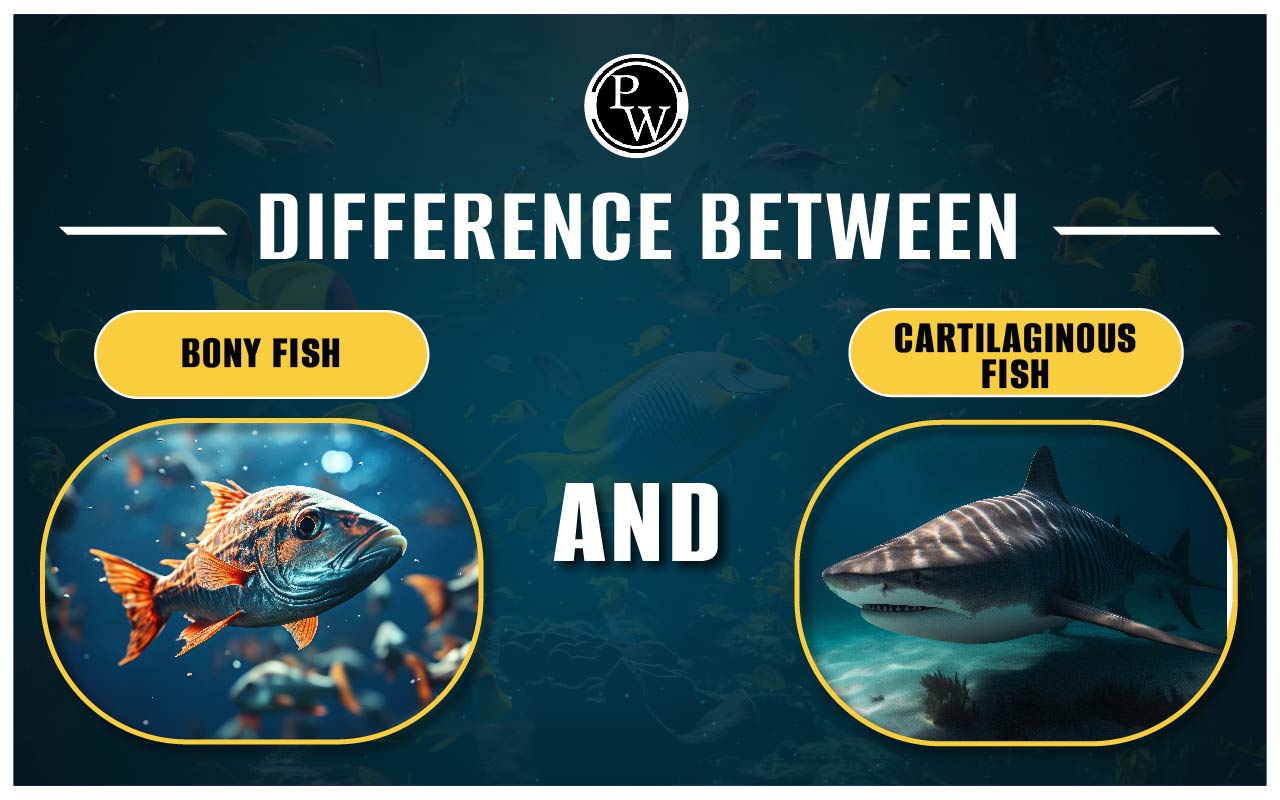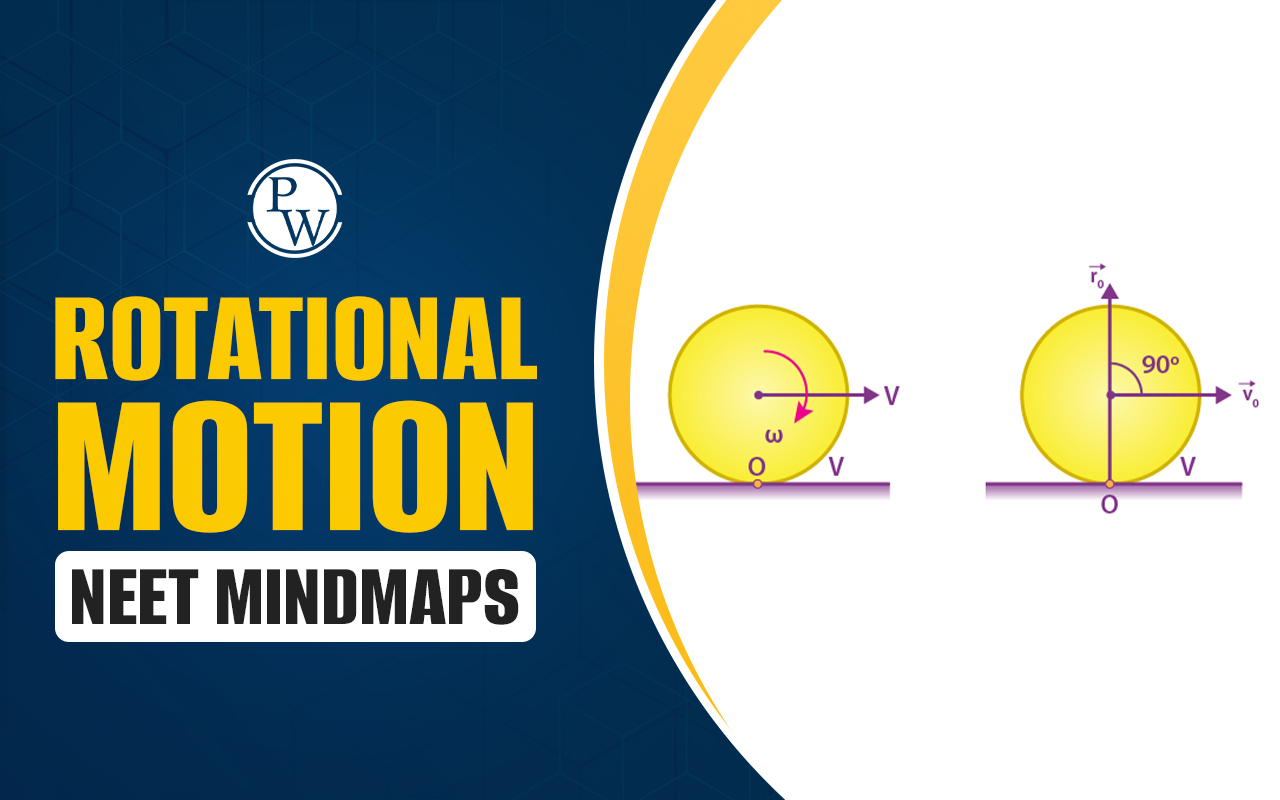

Difference Between Bony Fish and Cartilaginous Fish: Bony fish and cartilaginous fish are two types of aquatic chordates belonging to the classes Osteichthyes and Chondrichthyes, respectively. Bony fish live in both freshwater and marine environments, whereas cartilaginous fish can only be found in marine waters. Despite their different habitats, both types of fish have the same endoskeleton.
The primary distinction is in the composition of their endoskeletons: bony fish have an endoskeleton entirely composed of bones, whereas cartilaginous fish have an endoskeleton predominantly composed of cartilage. The detailed difference between bony fish and cartilaginous fish is provided in the article below.
Difference Between Bony Fish and Cartilaginous Fish Overview
Two types of fish have evolved over hundreds of millions of years, and they appear to be very similar. The most notable difference is the composition of their skeletons. Bony fish, as the name implies, have a skeleton entirely made of bones, whereas cartilaginous fish have a skeleton entirely composed of cartilage.
With approximately 20,000 different fish species worldwide, Pisces is the superclass of the Chordata class. This is primarily because fish account for more than half of all chordates. Fish in this category are classified as Osteichthyes or Chondrichthyes, which refers to bony or cartilaginous fish.
Bony and cartilaginous fish are the result of over a billion years of evolution and have superficial similarities. The world has a vast diversity of fish species, with approximately 28,100 known to mankind. All living organisms are classified hierarchically into Kingdom, Phylum, Class, Family, Order, and Species. Among the 28,100 fish species, this classification includes bony and cartilaginous fish. Their differences can be identified based on their hierarchical position, physical characteristics, and other factors. This article examines both types of fish, highlighting the significant difference between bony fish and cartilaginous fish.
Difference Between Bony Fish and Cartilaginous Fish
These two types of fish account for nearly all of the fish species on Earth. Bony and cartilaginous fish are classified into 28,000 different species. They have differences that make it interesting to compare them.Bony fish (Osteichthyes) have firm bone skeletons, while cartilaginous fish (Chondrichthyes) have flexible cartilage skeletons. This distinction significantly impacts their biology and ecology. Bony fish have swim bladders for buoyancy, while cartilaginous must swim continuously to prevent sinking. The table below provides a detailed difference between bony fish and cartilaginous fish.
| Difference Between Bony Fish and Cartilaginous Fish | ||
|---|---|---|
| Differentiating Property | Bony Fish | Cartilaginous Fish |
| Definition | Bony fish have a skeleton made of bone. | Cartilaginous fish have a skeleton made of cartilage. |
| Biological Classification | All bony fish are in the superclass Osteichthyes. | Cartilaginous fish fall under the class Chondrichthyes. |
| Alternative Names | Bony fish are also called Teleostomi. | Cartilaginous fish are also known as Elasmobranchii. |
| Class | Bony fish belong to the class Osteichthyes. | Cartilaginous fish belong to the class Chondrichthyes. |
| Number of Species | Over 27,000 species of bony fish are identified worldwide. | More than 970 species of cartilaginous fish are identified worldwide. |
| Habitat | Bony fish live in both fresh and marine water. | Cartilaginous fish are exclusively found in marine water. |
| Endoskeleton | Bony fish have an endoskeleton made of bones. | Cartilaginous fish have an endoskeleton made of cartilages. |
| Exoskeleton | The exoskeleton of bony fish consists of thin bony plates called cycloids. | The exoskeleton of cartilaginous fish is made of small denticles coated with sharp enamel, known as placoid. |
| Position of the Mouth | Bony fish have a mouth at the front tip. | Cartilaginous fish have a mouth positioned on the underside. |
| Oral Jaw Sets | Bony fish have two sets of oral jaws. | Cartilaginous fish have a single set of oral jaws. |
| Gill Pairs | Bony fish have four pairs of gills. | Cartilaginous fish have five to seven gills. |
| Operculum | The gills of bony fish are covered with an operculum. | The gills of cartilaginous fish are not covered with an operculum. |
| Air Bladder | Bony fish have a swim bladder for buoyancy. | Cartilaginous fish use an oil-filled liver for buoyancy. |
| Tail Fin | The tail fin of bony fish is homocercal. | The tail of cartilaginous fish is heterocercal. |
| Fertilization | Bony fish undergo external fertilization. | Cartilaginous fish undergo internal fertilization. |
| Excretion | Bony fish excrete ammonia. | Cartilaginous fish excrete urea. |
| Examples | Examples of bony fish include salmon, rohu, trout, flying fish, and seahorses. | Examples of cartilaginous fish include sharks, skates, and rays. |
Bony Fish
Bony fish are a big group of fish that have bones in their bodies. They became different from cartilaginous fish around 420 million years ago. There are about 27,000 kinds of bony fish around the world. Bony fish are in a group called Osteichthyes, and people also call them teleostomi. The biggest bony fish is the ocean sunfish, weighing about 2.3 tonnes.
Bony fish have a special cover for their gills called an operculum, and they also have a part filled with air that helps them float in the water. They have pairs of fins, like the ones on their sides, top, bottom, and back. Their body is rounded and narrow at the ends. Bony fish can feel water pressure and vibrations because they have a line with special organs along their body. They can also see different colors. There are two kinds of bony fish: ray-finned fish and lobe-finned fish.
Ray-finned fish: Ray-finned fish, like the ones in Actinopterygii, have fins with skin over flexible spines and one fin on their back. Most bony fish, about 99%, are ray-finned. They live in both oceans and rivers.
Lobe-finned fish: Lobe-finned fish in Sarcopterygii have fins that look like stumps, and they are fleshy. They have two fins on their back, and their side fins are like arms. Some have lungs in addition to gills. There are two types: lungfish and coelacanths.
Cartilaginous Fish
Cartilaginous fish have a skeleton made up of cartilages. Chondrichthyes is a class of cartilaginous fish that includes approximately 970 identified species worldwide. These fish are also known as elasmobranchii. Cartilaginous fish are found only in marine environments. The whale shark is the biggest of them, weighing up to 21.5 tonnes. Cartilaginous fish include basking sharks, great white sharks, thresher sharks, rays, skates, and southern stingrays.
Cartilaginous fish have gills that open into the ocean through slits, and their mouths are on the underside of the body, with eyes and spiracles on the top. Cartilaginous fish's skin is covered in dermal denticles that point in one direction. Sharks typically eat fish, seals, and whales, whereas rays and skates eat shrimps, oysters, clams, and crabs.
Physics Wallah offers the Online Coaching for NEET Exam aspirants. We provide high-quality coaching in India at an affordable price, striving to make our coaching accessible to everyone.
Check NEET Exam Important Links
| NEET Exam Important Links | |
|---|---|
| NEET Syllabus | NEET Biology Diagrams |
| NEET Biology MCQ | NEET Biology Chapter wise Weightage |
| NEET Biology Notes | NEET Previous Year Question papers |
Difference Between Bony Fish and Cartilaginous Fish FAQs
What distinguishes bone from cartilaginous fish?
Can you provide examples of bony and cartilaginous fish?
How do jawless fish differ from cartilaginous fish?
Do jawless fish have bones?
Is a shark considered a bony fish?












